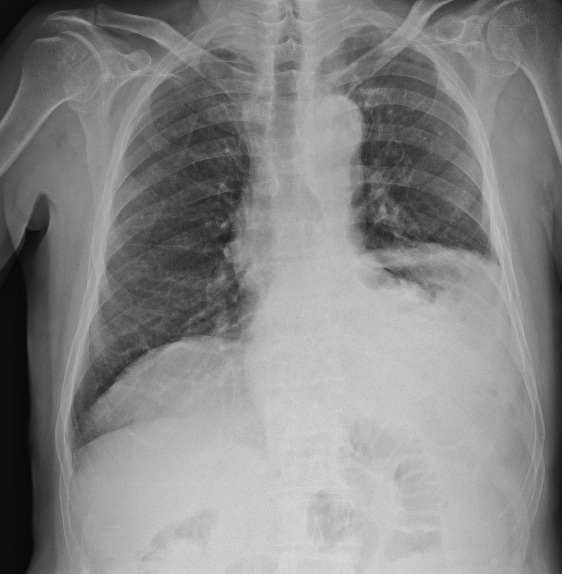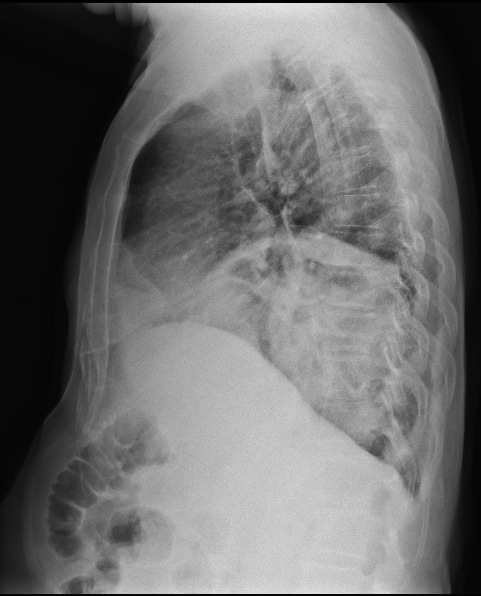Diseases of the diaphragm: Difference between revisions
Jump to navigation
Jump to search
m (Bot: Automated text replacement (-{{SIB}} + & -{{EH}} + & -{{EJ}} + & -{{Editor Help}} + & -{{Editor Join}} +)) |
|||
| (5 intermediate revisions by one other user not shown) | |||
| Line 2: | Line 2: | ||
{{CMG}} | {{CMG}} | ||
'''Associate Editor in Chief:''' {{CZ}} | '''Associate-Editor-in-Chief:''' {{CZ}} | ||
==Normal Anatomy of Diaphragm== | ==Normal Anatomy of Diaphragm== | ||
| Line 23: | Line 24: | ||
<div align="left"> | <div align="left"> | ||
<gallery heights="175" widths="175"> | <gallery heights="175" widths="175"> | ||
Image:RDE 001. | Image:RDE 001.jpg | ||
Image:RDE 002. | Image:RDE 002.jpg | ||
Image:RDE 003.jpg | |||
Image:RDE 004.jpg | |||
</gallery> | </gallery> | ||
</div> | </div> | ||
| Line 33: | Line 37: | ||
<div align="left"> | <div align="left"> | ||
<gallery heights="175" widths="175"> | <gallery heights="175" widths="175"> | ||
Image:LDE 001. | Image:LDE 001.jpg | ||
Image:LDE 002. | Image:LDE 002.jpg | ||
</gallery> | |||
</div> | |||
===Elevation of both hemidiaphragms=== | |||
(Image shown below is courtesy of Cafer Zorkun MD PhD and copylefted) | |||
<div align="left"> | |||
<gallery heights="175" widths="175"> | |||
Image:BDE 001.jpg | |||
</gallery> | </gallery> | ||
</div> | </div> | ||
| Line 130: | Line 143: | ||
{{Gastroenterology}} | {{Gastroenterology}} | ||
[[Category:Surgery]] | [[Category:Surgery]] | ||
Latest revision as of 00:49, 9 August 2012
Editor-In-Chief: C. Michael Gibson, M.S., M.D. [1]
Associate-Editor-in-Chief: Cafer Zorkun, M.D., Ph.D. [2]
Normal Anatomy of Diaphragm
- Composed of a central tendinous portion and a peripheral muscular portion
- Muscular portion consists of sternal, costal, and lumbar components
- Three major openings: aortic (aorta, azygos vein, thoracic duct), esophageal (esophagus, vagus nerves), caval (IVC)
- Right and left phrenic arteries arise from the abdominal aorta
- Additional arterial supply from pericardiophrenic and musculophrenic arteries
- Venous drainage is via right and left phrenic veins to the IVC; some drainage to the left renal vein as well
- Right and left phrenic nerves supply both sensory and motor innervation
Eventration of the Diaphragm
It is also called elevated hemidiaphragm or raised hemidiaphragm. Chest x-rays are usually enough for diagnosis and CT of the chest and upper abdomen is useful for confirmation.
Elevation of the right hemidiaphragm
(Images shown below are courtesy of Cafer Zorkun MD PhD and copylefted)
Elevation of the left hemidiaphragm
(Images shown below are courtesy of Cafer Zorkun MD PhD and copylefted)
Elevation of both hemidiaphragms
(Image shown below is courtesy of Cafer Zorkun MD PhD and copylefted)
Congenital Diaphragmatic Hernias
Bochdalek's Hernia
- Occurs posterolateral in the area of the 10th and 11th ribs
- 90% occur on the left
- 2:1 male to female incidence
- Usually isolated and not associated with other congenital defects
- Typically manifests as acute respiratory distress
- CXR demonstrates intestine in the thorax and shift of mediastinal contents to the right
- Initial treatment includes NG decompression, positive-pressure ventilatory support, and surgical correction
- Approach left-sided defect through the abdomen in order to explore for malrotation and obstruction
- Right-sided defects are repaired through a thoracotomy
- Postoperative mortality can be as high as 50%, mostly attributed to increased pulmonary vascular resistance
- ECMO is useful to reduce pulmonary vascular resistance and help resolve persistant fetal circulation
Morgagni's Hernia
- Defect occurs in a subcostosternal location
- Uncommon (less than 3% of diaphragmatic hernias) and usually asymptomatic
- Well defined hernia sac becomes symptomatic typically after age 40, when obesity, pregnancy, or trauma increases intraabdominal pressure
- The transverse colon is the most common organ to herniate, and can present as an acute colonic obstruction
- Repair is usually performed through a upper midline incision
Esophageal Hiatal Hernia
- Congenital defects causing these hernias are uncommon in adults, but some neonates and infants may have reflux associated with an esophageal hiatal hernia
- Typical symptoms are vomiting, respiratory complications, anemia, and failure to thrive
- Diagnosis rests on esophagography, fluoroscopy, and pH monitoring
- Treatment is primarily medical; surgery is indicated for medical failure
Tumors of the Diaphragm
Primary
- Rare tumors; cysts are more common than inflammatory masses, which are more common than neoplasms
- Equal male:female incidence; left-sided tumors are slightly more common than right-sided tumors
- Symptoms include pain, cough, dyspnea, and GI symptoms
- CXR and CT scan will localize the tumor
- The majority of neoplasms are benign (60%), which are usually cysts
- Up to 40% are malignant, usually sarcomas
- Treatment includes excision and closure of the diaphragmatic defect
Metastatic
- Most neoplastic involvement of the diaphragm occurs from contiguous extension of nearby tumors
- The most common lesions arise from lung, esophagus, stomach, liver, and the retroperitoneum
- Treatment is based on the primary tumor
Traumatic Perforation
- Penetrating perforation should be suspected with any thoracic injury below the level of the nipples (5th ICS)
- Most blunt hernias are caused by automobile accidents, and about 90% occur in the left hemidiaphragm
- Blunt trauma defects are large, usually about 10-15 cm, and typically located in the posterior left hemidiaphragm
- Stomach is the most commonly herniated organ, followed by spleen, colon, small bowel, and liver
- Respiratory insufficiency is common early, while intestinal obstruction predominates later
- CXR and CT scan will diagnose most; barium contrast is contraindicated, as it can produce a total obstruction in this setting
- Missed injury and delayed diagnosis commonly leads to bowel incarceration and obstruction
- Mortality is relatively high (15-40%) due to high incidence of associated injuries
- Repair should be undertaken promptly with full exploration for other injuries
- Left-sided perforation should be repaired through the abdomen to allow correction of associated injuries
- Right-sided perforations may require thoracotomy
Pacing
Indications
- Sarnoff (1940's) and Glenn (1950's) were the primary developers of diaphragmatic pacers
- Pacing is indicated in patients who have chronic ventilatory insufficiency with normal nerves, lungs and diaphragm
- This includes some quadriplegic patients and central alveolar hypoventilation
- Contraindications to pacing are lower motor neuron dysfunction, muscular dystrophy, and extensive lung disease
Mechanism
- There are four components to a diaphragmatic pacer:
- Transmitter: sets respiratory rate and length of inspiration
- Antennae: transfers signal across intact skin to the receiver
- Receiver: obtains signal and energy from external portion by inductive coupling
- Electrode: stimulates the phrenic nerve
- The electrode portion is usually implanted on the phrenic nerve through the 2nd ICS anteriorly
- The receiver is placed in a subcutaneous pocket
Central Alveolar Hypoventilation
- Features of CAH include: hypoxemia and hypercapnia increasing with sleep, hypoventilation or apnea during sleep, and clinical findings of cyanosis, polycythemia, and cor pulmonale
- These patients have near-normal ventilatory capacity tests, but have a reduced response to induced hypoxemia and hypercapnia
- Absence of upper airway obstruction or persistence after relief must also be demonstrated
- These patients should begin pacing within 3 weeks of operation
Quadriplegia
- Patients with high cervical lesions (C1 or C2) are suitable candidates; injury to C3-C5 may injure the motor component of the phrenic nerves, preventing adequate pacing
- Delay surgery for several months to allow for potential recovery after spinal cord injury
- Pacing should be gradually introduced to avoid diaphragmatic fatigue and permanent damage
- Patients should be selected who are good candidates for long-term rehabilitation

